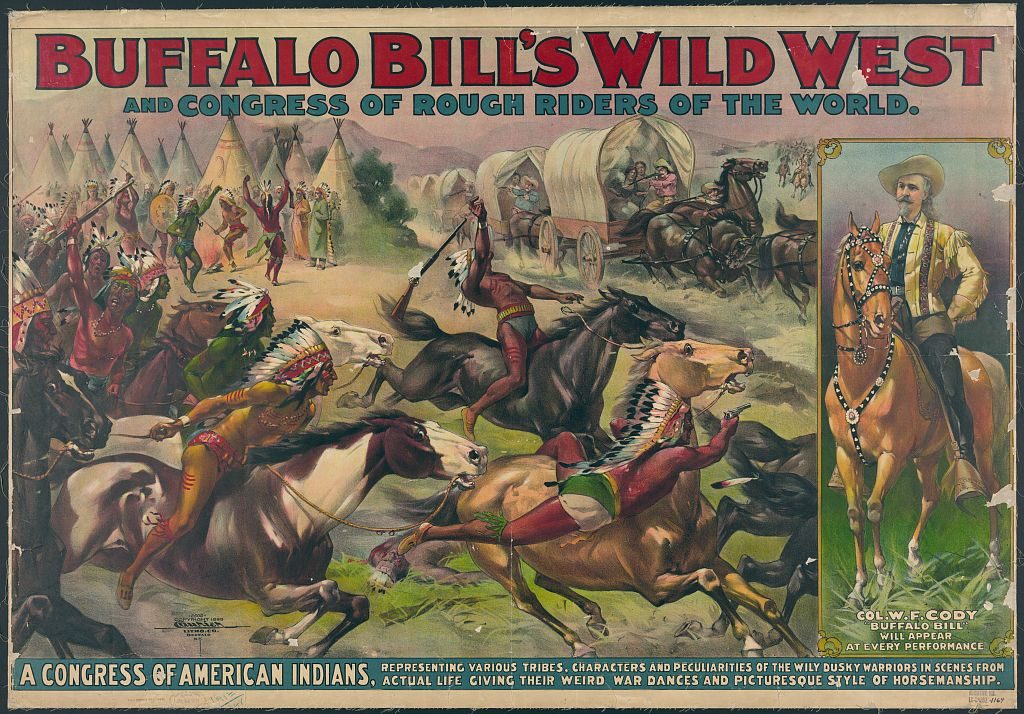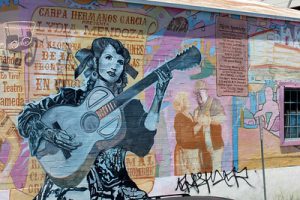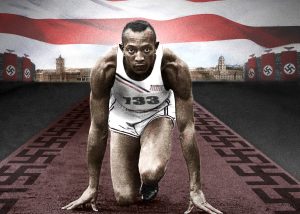In 1883, William “Buffalo Bill” Cody, famous frontiersman, army scout, and buffalo hunter, opened the doors of his Wild West Show for the first time.1 This show was a fantastical, exaggerated portrayal of life on the frontier, complete with reenactments of famous frontier battles with natives, displays by gifted marksmen (and one woman) and horsemen, and shows of the culture of the various Native Americans in Bill’s employ. This show would capture the hearts and minds of many people in the United States, and later on even in Europe, as Buffalo Bill’s show traveled to many European countries between 1886 and 1906.2

One of the reasons for the success of Buffalo Bill’s show was its “authenticity.” Bill himself was already somewhat of a celebrity in the west, after having earned his moniker “Buffalo Bill” for killing some 4,280 buffalo for the Kansas Pacific Railroad Company in the 1860s.3 Bill also had the good business sense to employ many of the Lakota Sioux and other Native Americans, including the man famous for the role he actually played at the Battle of the Little Big Horn, Chief Sitting Bull. It was in its depiction of Native Americans that many of his fans were drawn, enamored by the elaborate songs and dances of these peoples, with Buffalo Bill going so far as to say, “My Indians are the principal feature of this show.”4 The depiction of the Native Americans in his show was largely of their warrior culture, war regalia, and dances made for going into battle; however, this was taking place during the closing of the American frontier, when the death of the buffalo herds and the end of the Sioux Wars had largely ended this way of life in the west.
After roughly four months working with Cody, Sitting Bull grew tired of the show and left to return to the Standing Rock Reservation, where he would eventually be killed. Later in 1890, the Massacre at Wounded Knee would take place and many Sioux would be killed by the U.S. 7th Cavalry, the same regiment that fought with Custer years prior, at the Battle of the Little Big Horn.5 With this, the way of life that was shown in Buffalo Bill’s show was all but destroyed.

Even with this, Buffalo Bill’s Wild West Show continued to be popular up until it went bankrupt and closed in 1916.6 By 1916, the “Wild West” had not truly existed for quite some time; the country had been rapidly industrializing, and the age of both Cowboys and Indians would soon give way to the machine guns and artillery of the First World War. However, it was not the death of the west that ended Bill’s show, but rather the end of interest in the west. Although people praised Bill’s show for its authenticity, it was not authentic to the contemporary west. The show did not feature miles-long slow rides in freezing temperatures on cattle drives, and it did not show subsistence farming. What Buffalo Bill’s Wild West Show gave its audience was the same thing that they grew accustomed to from dime novels and stories of the west: rough and tumble cowboys, crack shots, skilled horsemen, and the Natives that made the west so dangerous. With the closing of the frontier and the nation looking outside of its borders to expand, the west was no longer as exotic as it once was in the public’s eye, and was anything but wild.
- Stephen G. Hyslop, “How the West was Spun,” American History 43, no. 4 (October 2008): 26. ↵
- Irene Lottini, “When Buffalo Bill crossed the ocean: Native American scenes in early twentieth century European culture,” European Journal Of American Culture 31, no. 3 (October 18, 2012): 187. ↵
- Stephen G. Hyslop, “How the West was Spun,” American History 43, no. 4 (October 2008): 27. ↵
- Stephen G. Hyslop, “How the West was Spun,” American History 43, no. 4 (October 2008): 33. ↵
- Stephen G. Hyslop, “How the West was Spun,” American History 43, no. 4 (October 2008): 33. ↵
- Douglas Seefeldt, “Buffalo Bill’s Wild West,” in America in the World, 1776 to the Present: A Supplement to the Dictionary of American History, edited by Edward J. Blum, Vol. 1. (Farmington Hills, MI: Charles Scribner’s Sons, 2016), 163. ↵



63 comments
Olivia Gray
This article was very interesting to read and learn about the history of the Buffalo Wild West show. I never heard about this until I read this article.It was interesting to know how popular this show was back in the day and how it started to when it no longer became an interest. I think this article did a really good job explaining the importance of the show and how it relates to the Native American culture.
Madison Magaro
This was my first time hearing about the Buffalo Bill’s Wild West Show and I feel like this article did a good job at explaining what it was. It was interesting to read that the Indians were the principle of the show because it shows that he really tried to focus on how they were perceived as warriors. It was also cool to read that the show closed because the topic of the wild west was not interesting in the public’s eye anymore.
Maria Luevano
I have heard of Buffalo Bills Wild West show before and love the wild west theme. It is interesting to read about, what I would consider an American obsession, the Wild West was this fantasy world where there were cowboys and native Americans always fighting and extreme weather was always occurring. I think it is important to highlight that Americans have always been intrigued by tragedy. The show excelled by reenacting frontier battles and conflicts that were in reality not entertaining at all and a serious topic about many deaths.
Tabitha Babcock
This was a very interesting read. The thing that shocked me the most was Buffalo Bill himself. I can’t believe one man could and/or would kill over four thousand buffalo. That’s crazy to think about. Part of me is glad he employed Indians, as having white people play their part would be incredibly insulting, however, the other part of me is extremely angry that he would exploit the people he was harming. He was killing off their greatest economical strength and showcasing them as dangerous. That being said, it must’ve been a great show because we can still see the effects of it in media today, via romance books with cowboys or action-packed western movies.
Andrea Tapia
I was amazed after reading about the Wild West show and how buffalo bill really put a genuine perspective into this. By not only showing Native American culture in a way their characters were so unique but to be able to recruit these people from several tribes. It encourages different views of the events that happened in the west. One of the lines that really caught my eye is when he said, “My Indians are the principle of this show” meaning that even though it ended and not for the show itself it captured as much as it could that people enjoyed seeing.
Erika Longoria
This article did a great job in explaining all about Buffalo Bill’s Wild West Show. It’s interesting to learn that the reason his show ended wasn’t because of the actual show, but because of people’s lack of interest during that time. This just goes to show how popular and great people thought the show was. Although it didn’t depict the full truth, it attracted many viewers throughout it’s air time.
Anthony Dinh
It’s very interesting how a person can make a whole show about a culture. Though it was short lasted, even after his death it seemed to have caught on even more. Though the show did fall off eventually and it wasn’t Because of the show, but the lost of interest of the west really shows how popular and pleasing this must have been for the people. Though it wasn’t authentic to what it was actually like in the west, he grabbed all of the eye catching parts of the indians in the west. This is a smart marketing tool I think, because he tried to cater the show towards the north eastern states
Kayla Cooper
This article was well developed and tells so many interesting facts about the Buffalo Bill Wild West Show. This article gave me so many facts that I didn’t even know and they are very interesting. It tells us how popular the show was and the significance it had back in time. This article can really help other students learn about the show and the Westward expansion.
Cecilia Schneider
This article holds significance especially because of the retirement of the show. Its history reveals the American drive and desire for the unknown wonders. The glamour that was advertised covered so much exploitation and mistreatment if you were not within or around the west already. I hadn’t realized that actual chiefs had been put on display, which adds another element on curiosity to how exactly Buffalo Bill had “hired” these Native Americans to be within his show.
Veronica Lopez
I really enjoyed this article, I’ve always been interested in the “Wild West” era. This article is a good article for those who are interested in learning about the Westward Expansion. It may also be helpful when you’re doing research on a specific native group (the Sioux.) This article was very helpful to me and can be helpful to other students who are learning about Westward Expansion. I learned things that I didn’t know before.